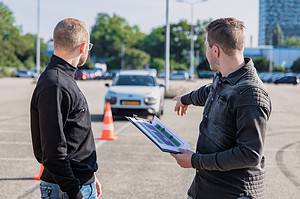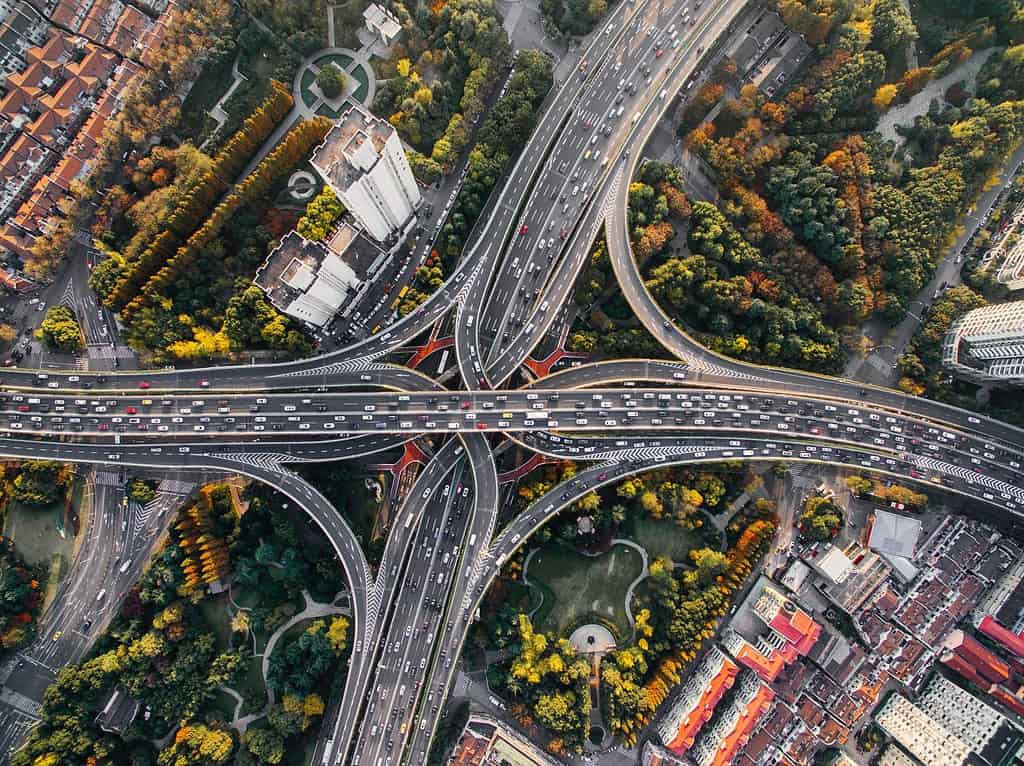If you were injured in a car accident in Florida, you must prove fault to seek compensation for damages. Proving fault would be easy if the other driver ran a stop sign and bumped into you.
Unfortunately, not all car crashes are this straightforward. So, who is at fault in a lane change accident in Fort Walton Beach?
Lane change accidents often occur suddenly and at high speeds, making it difficult to determine who is responsible for the crash.
Questions on speed, distance, blinker use, distraction, or negligence arise when establishing liability.
This article will explore the factors influencing fault in a lane change accident. Read on to how to prove fault in a lane change accident with the help of a Fort Walton Beach car accident attorney.
Lane Change Accident Statistics
Lane change is a common cause of car accidents on Florida roads. This type of accident, also known as a sideswipe or merge accident, results in thousands of injuries every year.
A 2020 report by the AAA Foundation for Traffic Safety found that with gender notwithstanding, about 8 in 10 (79%) motorists engaged in aggressive driving behaviors, including hindering others from switching lanes, following too closely, gesturing, etc.
11.9% of these people also admitted intentionally cutting another vehicle off. These risky behaviors contribute to Florida’s many lane change crashes.
Elements of Negligence in a Lane Change Accident
Anyone authorized to drive in Florida must follow specific procedures when changing lanes. Unfortunately, improper lane changes are a common cause of accidents on roads and highways.
Determining negligence in a lane change accident generally involves four elements:
- Duty– does the other driver owe you a duty to drive safely and responsibly?
- Breach– Did this driver breach this duty by changing lanes abruptly or driving recklessly?
- Causation– Did you suffer injuries because of the driver’s negligence?
- Damages– Can you prove your injuries through medical treatment records, evidence of emotional distress, or expert testimony?

Establishing that the other driver was at fault in a lane change accident is usually tricky. Florida laws require drivers to continuously signal during the last 100 feet driven before changing lanes.
You can file a personal injury claim if a driver fails to comply with this law and causes an accident. A Fort Walton Beach car accident attorney can help you gather the evidence of a violation to establish fault and liability.
Who Has the Right-of-Way When Changing Lanes?
Can you tell if you have the right-of-way when trying to change lanes? There are two main situations you should know about when driving in Florida:
Changing lanes
The driver moving straight ahead in a lane has the right-of-way. The other driver changing lanes should ensure it is safe before doing so.
Most often, the driver who collides with another when changing lanes is responsible for the accident. But if the other driver tries to stop the lane change, such as speeding or slowing down, they may be held accountable for the collision.
Merging traffic
The driver moving straight ahead in the lane has the right of way when two lanes merge, or a car enters a road from another route.

Similarly, the merging driver must check before doing so. But the driver moving straight ahead should either give way or slow down if they see another driver trying to merge. If both fail to cooperate, they could be liable for the accident.
Who Is at Fault If a Driver Collides with You When Merging?
Generally, the most important thing to remember for lane change crashes and car accidents is that fault is based on negligence. That means the person who had a duty to care and somehow failed in that duty is the at-fault party.
Every motorist owes this duty to other road users. If a crash ensues when a driver tries to merge into traffic, then the merging driver is at fault.
Drivers should check their mirrors and blind spots to know whether it is safe to change lanes before merging. Failure to do this may have them colliding with another car, leading to a catastrophic accident.
A merging driver could cause an accident through:
- Failure to check their side-view and rear-view mirrors before merging
- Failure to use a turn signal as necessary when merging
- Failure to match the speed of the car to the speed of the traffic in the lane they are merging into
- Distractions, such as texting or talking on the phone when attempting to merge
When drivers ignore traffic rules and do not take proper measures before merging, they are said to have breached their duty of care for other drivers and can be held liable for the collision.
That said, you will need solid proof to support your personal injury claim before you secure compensation from the at-fault driver and their insurance provider.
A Fort Walton Beach car accident attorney can help you gather the necessary evidence.
Who Is at Fault in a Lane Change Accident?
Determining who is at fault for sideswipe accidents may be difficult. In most cases, these accidents occur when both vehicles move and frequently happen at fast speeds, giving drivers little time to respond.
However, one motorist typically takes all or most liability for a sideswipe collision. It is critical to review the available evidence carefully to determine whether the driver was negligent and caused the crash.

Examples of negligent behaviors that might result in a sideswipe collision include:
- Changing lanes without looking in the side- and rear-view mirrors
- Changing lanes without looking into your blind spot
- Changing lanes without using a turn signal
- Changing lanes without matching your speed with the flow of traffic, such as by driving too slow or too fast compared to the traffic
- Changing lanes while distracted by your phone or something else
- Cutting off another car when changing lanes
Any motorist engaging in these actions and causing a crash has failed to take precautionary measures before changing lanes. That means they are negligent and will likely be held responsible for any damages caused.
Is the Driver Who Changed Lanes Always at Fault?
Most of the time, the driver changing lanes is liable for the resulting accident. But this is not always the case.
The conduct of both drivers leading to the collision must be considered when determining fault. Sometimes, the motorist not changing lanes might share part of the blame.
The motorist who was not changing lanes may have contributed to the collision in one of the following ways:
- Speeding so that the other driver cannot enter the lane
- Slowing down to hinder the other vehicle from merging
- Following too closely to hinder the other driver from merging
- Refusing to slow down speed after a driver who is merging into traffic has indicated their intention
- Brake checking to upset the merging driver
Proving Fault for a Lane Change Accident
When two drivers give different accounts of the same collision, further evidence is required to establish who was at fault.
Some evidence you can use to establish fault in a lane change accident include:
- Statements from all drivers involved in the collision
- Police accident reports
- Photos and videos of the accident scene
- Eyewitness accounts
- Medical reports
- Forensic accident reconstruction teams’ reports

Even if you are found to be partially responsible for the crash, you are still entitled to compensation for your damages.
Under Florida’s comparative negligence law, you can recover compensation if you were responsible for the crash, but your amount will reduce according to your percentage of fault.
Speak to a Fort Walton Beach Car Accident Attorney
Lane change accidents can result in severe injuries, costly medical bills, and property damage. It is, therefore, essential to seek assistance from a seasoned car accident attorney if you have been involved in these accidents.
At Legal Giant, we can help you find a skilled lawyer near you. Our partner attorneys can investigate the crash and gather evidence to determine fault as you focus on your recovery.
They will also help you file a claim and negotiate with the at-fault driver’s insurer for fair compensation for all your damages.
Contact us at (855) 740-5024 to speak to a Fort Walton Beach car accident attorney today.

